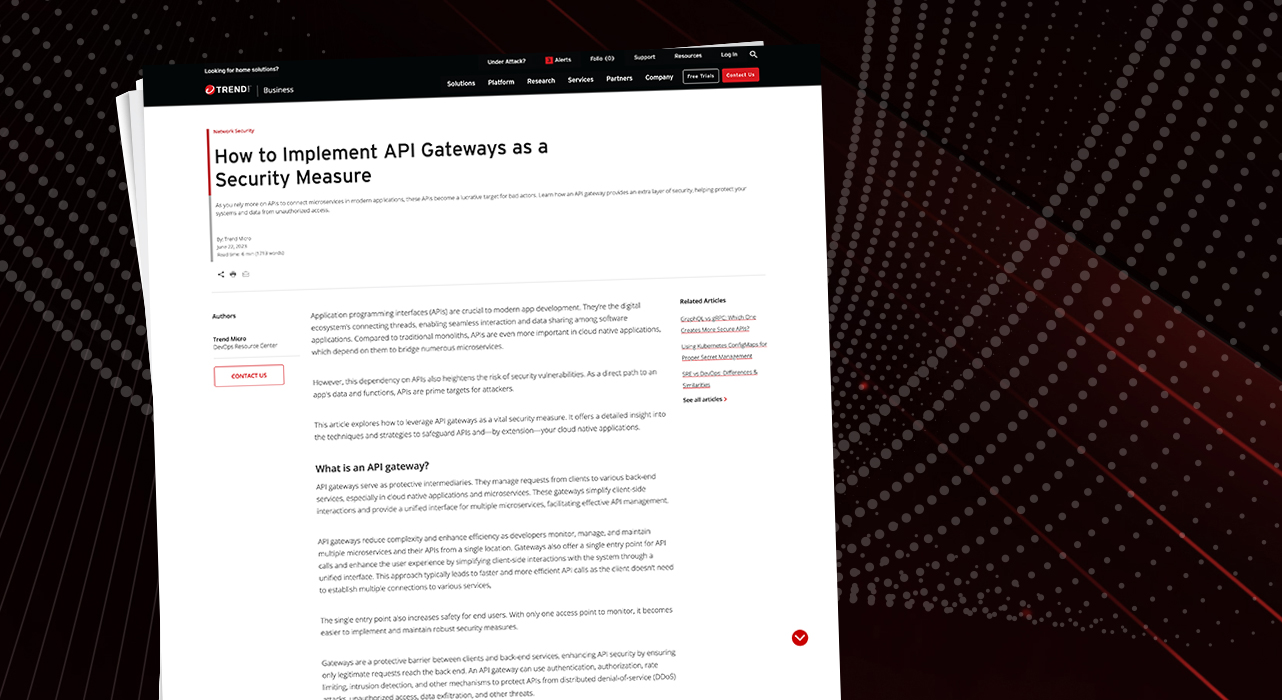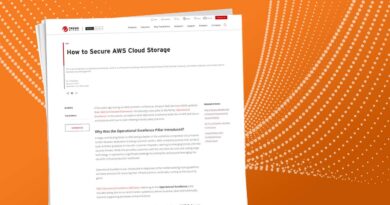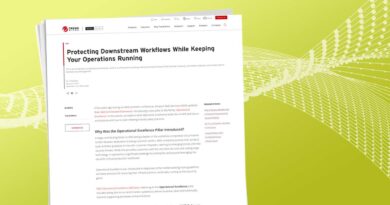How to Implement a Secure API Gateway


Application programming interfaces (APIs) are crucial to modern app development. They’re the digital ecosystem’s connecting threads, enabling seamless interaction and data sharing among software applications. Compared to traditional monoliths, APIs are even more important in cloud native applications, which depend on them to bridge numerous microservices.
However, this dependency on APIs also heightens the risk of security vulnerabilities. As a direct path to an app’s data and functions, APIs are prime targets for attackers.
This article explores how to leverage API gateways as a vital security measure. It offers a detailed insight into the techniques and strategies to safeguard APIs and—by extension—your cloud native applications.
What is an API gateway?
API gateways serve as protective intermediaries. They manage requests from clients to various back-end services, especially in cloud native applications and microservices. These gateways simplify client-side interactions and provide a unified interface for multiple microservices, facilitating effective API management.
API gateways reduce complexity and enhance efficiency as developers monitor, manage, and maintain multiple microservices and their APIs from a single location. Gateways also offer a single entry point for API calls and enhance the user experience by simplifying client-side interactions with the system through a unified interface. This approach typically leads to faster and more efficient API calls as the client doesn’t need to establish multiple connections to various services,
The single entry point also increases safety for end users. With only one access point to monitor, it becomes easier to implement and maintain robust security measures.
Gateways are a protective barrier between clients and back-end services, enhancing API security by ensuring only legitimate requests reach the back end. An API gateway can use authentication, authorization, rate limiting, intrusion detection, and other mechanisms to protect APIs from distributed denial-of-service (DDoS) attacks, unauthorized access, data exfiltration, and other threats.
Distributing requests evenly across back-end services becomes essential as applications scale and request volumes increase. API gateways balance loads by efficiently routing incoming requests to appropriate services, ensuring optimal performance and preventing service outages.
As APIs become more prominent in modern application architecture, they become attractive targets for hackers. The API threat landscape is quite broad and some attacks include unauthorized access, data breaches, and denial of service (DoS) attacks.
Unauthorized access is a typical threat. Attackers exploit API vulnerabilities to access sensitive data or services, often by impersonating legitimate users or manipulating API endpoints. Such breaches can cause sensitive information leaks, service disruptions, or unauthorized control of complete systems.
Data breaches—the unauthorized extraction of sensitive data—are significant threats to APIs handling vast amounts of data. Attackers can exploit weak encryption or unprotected endpoints to steal data, causing financial and reputational damage.
DoS attacks aim to crash an API by overloading it with requests, making the API and application unavailable to legitimate users. The DDoS variant of this attack uses many sources to flood the API, increasing the scale of the attack and making mitigation even more challenging.
These security challenges underscore the importance of robust API security measures. A comprehensive API security strategy prevents unauthorized access and data breaches, ensuring API availability and resilience against DoS attacks. Implementing an API gateway with numerous security features is crucial to building this robust security framework.
API gateways enforce security through authentication and authorization, ensuring only legitimate users access APIs and resources.
Authentication verifies a user’s identity using various mechanisms, like API keys, OAuth 2.0, and JSON Web Tokens (JWTs). API keys are simple and suitable for rate limiting or identifying users, while OAuth 2.0 and JWT offer more secure authentication methods.
The OAuth 2.0 flow redirects users to the service where they log in and gain permission. The service then returns an access token to the client, which they use for authentication in API requests.
A JWT is a self-contained token that includes the user’s identity and other claims. The server signs the JWT and the client includes it in the API requests. Additionally, the server can verify the JWT’s signature to authenticate the user.
After authentication via one of these methods, authorization determines if the user has the necessary permissions to access a resource. Role-based access control (RBAC) is a popular authorization method, associating permissions with roles and assigning users to these roles. API gateways enforce RBAC policies, checking the authenticated user’s role before allowing access.
API gateways employ rate limiting and throttling as security measures to mitigate DoS attacks and ensure equitable resource usage. These techniques cap the API calls a client can make within a set time, averting server overload from excessive requests.
Rate-limiting strategies commonly include the fixed window, sliding window, or token bucket algorithms. The fixed window strategy allows a certain number of requests per interval, while the sliding window strategy tracks requests within a rolling time frame. The token bucket strategy generates tokens over time, which API calls consume, enabling short bursts of traffic as long as the traffic doesn’t exceed the bucket’s size.
Rate limiting configuration can vary based on IP address, API key, or user. This approach helps prevent a single client, application, or user from monopolizing resources. For example, limiting requests per IP address per hour, or API key per day, ensures fair resource allocation.
Input validation and sanitization are essential security practices to fend off attacks such as Structured Query Language (SQL) injection and cross-site scripting (XSS). These attacks happen when a malicious actor manipulates input data to execute unauthorized commands in backend systems.
Unvalidated or unsanitized user inputs often leads to security vulnerabilities. In SQL injection, attackers can manipulate queries using input containing SQL commands, possibly causing unauthorized access or data leaks. In XSS attacks, an attacker injects JavaScript code into user input. This renders in a user’s browser to enable harmful activities like session hijacking or webpage defacement.
API gateways effectively prevent these injection attacks by validating and sanitizing input data before it reaches the underlying APIs. The gateway can also ensure input data aligns with expected patterns and reject invalid requests. Additionally, it can sanitize data by encoding special characters or removing harmful elements to prevent the application from interpreting them as malicious code.
These gateways can use allowlists to determine what’s allowed as input, rejecting everything else. For instance, if an input field contains a date, the API gateway can verify that the input matches the expected date format.
The gateway can also use encoding to transform special characters into a safe format. HTML encoding converts characters like ‘<‘ and ‘>’ into ‘<’ and ‘>’, stopping the application from interpreting them as HTML tags.
Avoid using user-supplied data directly in commands or queries. Instead, use parameterized queries or prepared statements to treat user-supplied data as data, not executable code.
By implementing strong input validation and sanitization, API gateways shield your APIs from injection attacks, ensuring data and system security.
API gateways play a significant role in logging and monitoring. They track and analyze the data flow, offer vital insights into API usage, signal potential security threats, and assist in incident response and forensic analysis after a security breach.
Specifically, API gateways gather and scrutinize various API traffic logs. These logs may include execution logs, which record ongoing operations as the service executes and access logs, which record every service request. Both log types contain invaluable information such as the request time, client’s IP address, requested resource, and response status. Analyzing these logs in detail can reveal patterns and anomalies in API usage, helping identify potential security threats.
API gateways also actively monitor real-time API usage. They can track metrics such as the number of requests per client, average response time, and error rate to identify potential issues. For example, sudden traffic surges or increased error rates could indicate a DoS attack or issues with a back-end service.
The best practice is integrating API gateways with a security information and event management (SIEM) system for comprehensive security logging. SIEMs collect and analyze logs and events from various sources, which you can analyze alongside API logs for a more holistic understanding of the security landscape. For instance, a sudden surge in API traffic that corresponds to a SIEM network intrusion detection system alert at the same time could signal a potential DDoS attack.
SIEMs also serve as a central repository for logs and events, supporting compliance, incident response efforts and forensic analysis for a security breach. You can use stored logs and events to determine the breach’s cause, trace the attacker’s actions, and assess the damage.
API gateways offer several additional features to enhance API security, including Secure Sockets Layer (SSL) or Transport Layer Security (TLS) termination, cross-origin resource sharing (CORS) management, and DDoS protection.
SSL/TLS termination handles SSL/TLS encryption and decryption at the API gateway, offloading this task from back-end services. It lessens the computational burden on your back end, centralizes SSL/TLS certificate management, simplifies encryption standard enforcement, and keeps certificates updated. Additionally, by scrutinizing decrypted traffic, the gateway can implement advanced security measures like inspecting the request’s content for threats and enforcing granular access control.
The CORS security measure limits which websites can request your API. API gateways manage CORS policies, defining permissible origins, HTTP methods, and credential transmission with requests. Enforcing CORS policies at the gateway prevents unauthorized websites from interacting with your API, reducing risks like cross-site request forgery (CSRF) attacks.
While rate limiting and throttling mitigate DDoS attacks, some API gateways offer extra DDoS protection features, such as IP blocklisting, anomaly detection, and DDoS protection service integration. These features enhance DDoS attack detection and mitigation, maintaining API availability even under attack.
In the age of digital transformation, APIs have emerged as a critical bridge to connect software applications and services, especially in cloud native applications.
Implementing robust API security measures is necessary to protect sensitive data, ensure service availability, and maintain consumer and partner trust. Developers and API administrators can leverage the multifaceted security features that API gateways offer. This approach ensures that your APIs remain robust, reliable, and secure against evolving security threats. Consequently, this protects your data, services, and reputation in the digital ecosystem.
Read More HERE



